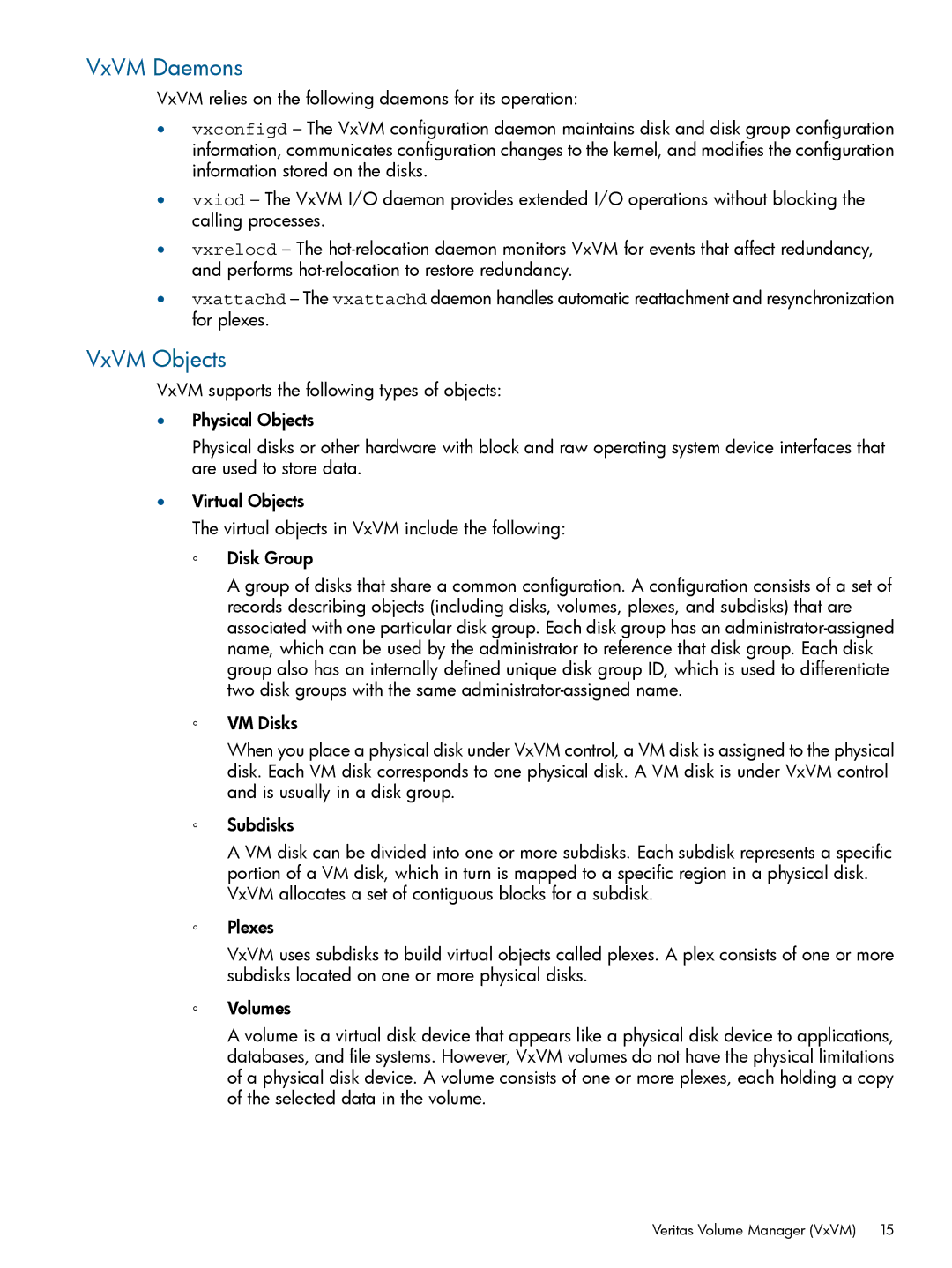VxVM Daemons
VxVM relies on the following daemons for its operation:
•vxconfigd – The VxVM configuration daemon maintains disk and disk group configuration information, communicates configuration changes to the kernel, and modifies the configuration information stored on the disks.
•vxiod – The VxVM I/O daemon provides extended I/O operations without blocking the calling processes.
•vxrelocd – The
•vxattachd – The vxattachd daemon handles automatic reattachment and resynchronization for plexes.
VxVM Objects
VxVM supports the following types of objects:
•Physical Objects
Physical disks or other hardware with block and raw operating system device interfaces that are used to store data.
•Virtual Objects
The virtual objects in VxVM include the following:
◦Disk Group
A group of disks that share a common configuration. A configuration consists of a set of records describing objects (including disks, volumes, plexes, and subdisks) that are associated with one particular disk group. Each disk group has an
◦VM Disks
When you place a physical disk under VxVM control, a VM disk is assigned to the physical disk. Each VM disk corresponds to one physical disk. A VM disk is under VxVM control and is usually in a disk group.
◦Subdisks
A VM disk can be divided into one or more subdisks. Each subdisk represents a specific portion of a VM disk, which in turn is mapped to a specific region in a physical disk. VxVM allocates a set of contiguous blocks for a subdisk.
◦Plexes
VxVM uses subdisks to build virtual objects called plexes. A plex consists of one or more subdisks located on one or more physical disks.
◦Volumes
A volume is a virtual disk device that appears like a physical disk device to applications, databases, and file systems. However, VxVM volumes do not have the physical limitations of a physical disk device. A volume consists of one or more plexes, each holding a copy of the selected data in the volume.
